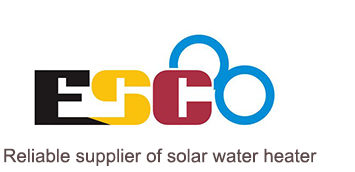What is a passive solar water heater? Running by gravity, no need for circulating water pumps,build design plans diy, passive solar water heaters are more reliable and relatively inexpensive due to the lack of electronic control equipment.Thermosiphon, the water is heated down, the cold water drops, the hot water rises, so the water tank is above the collector, Active solar heat convection, direct circulation of natural circulation, and low-cost way of working.
Hot water heating methods are: vacuum tube, flat plate, split type, electric water heater, air energy heat pump. Integrated collectors usually need to be mounted on the roof.
We provide fast and cheap solar water heaters.
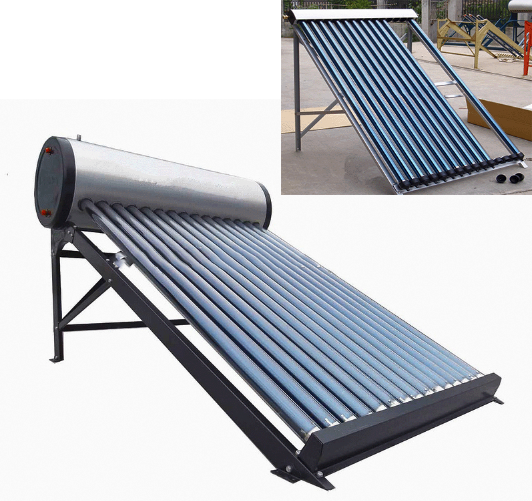
What is a passive solar water heater?
The passive solar water heaters are simple heating systems that utilize the free solar heat energy without the use of an external energy to transfer the hot and cold solar fluids. This is the most popular way of harnessing the free sun energy as they are the least expensive, simple and reliable.Such a system uses the principle of physics (heated water rises to the upper part of the tank) to transfer the heat from the solar collector to the storage tank.
Passive systems can be used for direct domestic water heating or indirectly by circulating the solar heat transfer fluid through the heat exchanger.
What are the types of passive solar water heaters?
- Integral collector-storage passive systems
These work best in areas where temperatures rarely fall below freezing. They also work well in households with significant daytime and evening hot-water needs. - Thermosyphon systems
Water flows through the system when warm water rises as cooler water sinks. The collector must be installed below the storage tank so that warm water will rise into the tank. These systems are reliable, but contractors must pay careful attention to the water heater on roof design because of the heavy storage tank. They are usually more expensive than integral collector-storage passive systems.
Integral collector-storage passive systems
Integral Collector Storage systems are passive as they don’t require pumps for the operation. They are also called batch water heaters and they are the only solar heating systems that do not require the storage tank. They consist of the ICS collector and piping only.
Batch passive solar water heater is the best option for your money due to its simple and low-cost design, and if you live in the warmer areas. This passive system is very popular in the southern parts, tropical areas, vacation homes and recreational facilities where it is used only during the summer. During the rest of the year, especially cold weather, water should be drained.
This is our solar water heater product
Stainless steel low pressure solar water heater Evacuated tube solar water heater

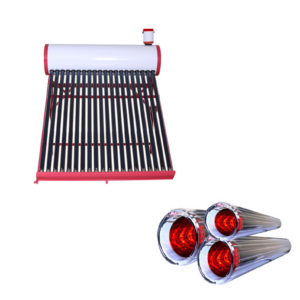
Glass Tubes Solar Water Heater Flat plate solar water heater
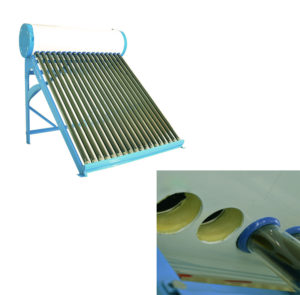
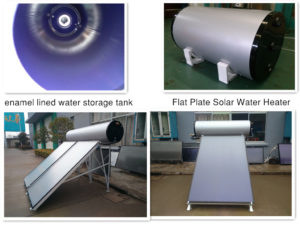
Electric storage water heater Heat Pipe Collector Solar Water Heater
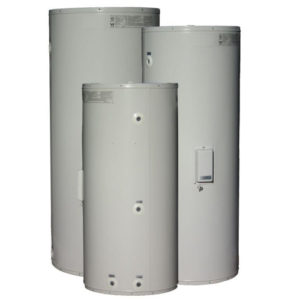
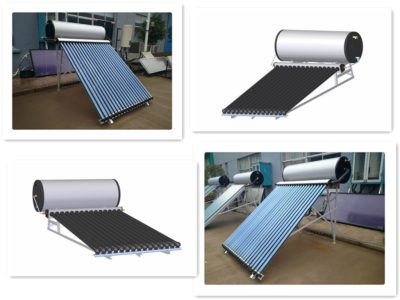
Split type solar water heating system porcelain enamel lined tank
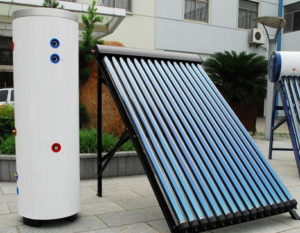
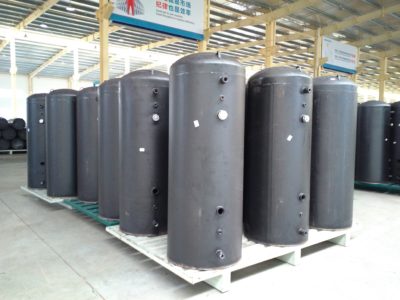
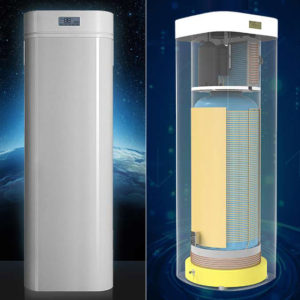
Advantages
- One of the simplest solar heating systems.
- Batch systems are very easy to maintain.
- No mineral build-up when working with the hard water.
- No moving parts, controllers, antifreeze…
Disadvantages
- Lack of versatility.
- They are used mainly in the warmer areas.
- Batch heater, when subjected to freezing, has to be drained.
- If used in colder areas, the efficiency is very low.
- Batch collector might damage due to hot conditions.
- Strong roof needed as they are heavy.
- High stand-by heat loss.
Thermosyphon systems
The main components of the thermosyphon passive systems are the solar storage tank, panels, pipes, and valves.
If you live in the warmer area you might want to consider direct, open-loop thermosiphon heating system, where domestic water is heated directly inside the flat plate solar collectors or panels. Usually, the bottom of the storage tank is connected to the bottom of the collector while the top of the collector is linked to the top of the collector, transferring the heated water to the tank and from there to the backup heater.
The main disadvantage of the passive thermosyphon systems is that they are vulnerable to conditions like hard water,plans as the flat plate collectors are constructed of the small pipes, which can easily become clogged. One of the solutions is to use the softener.
A solar storage tank in thermosyphon systems has to be well insulated to reduce the standby heat losses, especially during the night.
Advantages
- Simple design.
- Reliable.
- Efficient as they are using well-insulated storage tanks. Even during the night, stand-by heat loss is significantly reduced.
- No moving parts mean fewer problems.
- Thermosyphon system is flexible; it can work in warmer and colder areas.
- Easy troubleshooting.
- Worry-free maintenance.
- Cheap.
Disadvantages
- A pump might be needed for colder areas to move the water and prevent freezing.
- They are heavy. When installed on the roof, the storage tank full of water, weights many gallons, so you might have to put some reinforcement on the roof.
- The tubing inside the solar collectors is subjected to mineral build-up due to its small size in the areas with the hard water.
Active Solar Water Heating Systems
- Direct circulation systems
Pumps circulate household water through the collectors and into the home. They work well in climates where it rarely freezes. - Indirect circulation systems
Pumps circulate a non-freezing, heat-transfer fluid through the collectors and a heat exchanger. This heats the water that then flows into the home. They are popular in climates prone to freezing temperatures.
How to design passive solar water heater?
Batch heaters have long been known as the best choice in warm climates or for seasonal use in colder areas, and recent work with improved materials and designs suggests they may also be the best choice even in colder areas. For owner-built applications,plans they outshine their flat-plate and evacuated-tube competition in almost every way,plans including reliability and ease of installation. They have excellent potential for retrofits and are ideal for a range of farming and commercial applications, providing low-cost hot or warm water for washing or preheating for higher temperature uses.
The Solar Shower is really a small-scale batch heater,plans a classic design using clear and black plastic to make a portable and surprisingly effective solar water heater. Water is placed in the bag and then set out with the clear side facing the sun. Within an hour, the water starts to heat up, providing a delightful shower on even a cool day if the sun is bright. I have used these for years while camping and am always impressed with how well they work.
Here is YouTube video help to help you design and build diy passive solar heating plan.
Diy passive solar water heating plans
- A solar water heater can be made from a few pieces of PVC pipe.
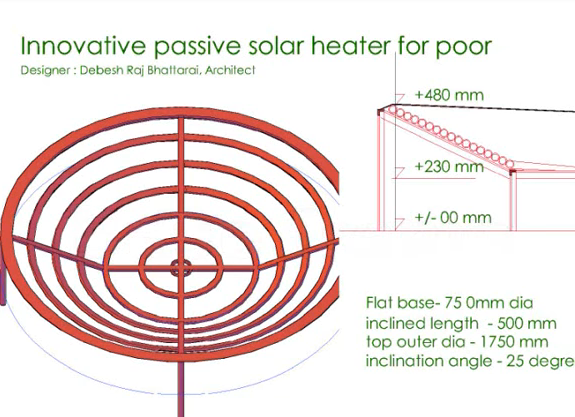
- You can make a solar hot water heater for under $20.
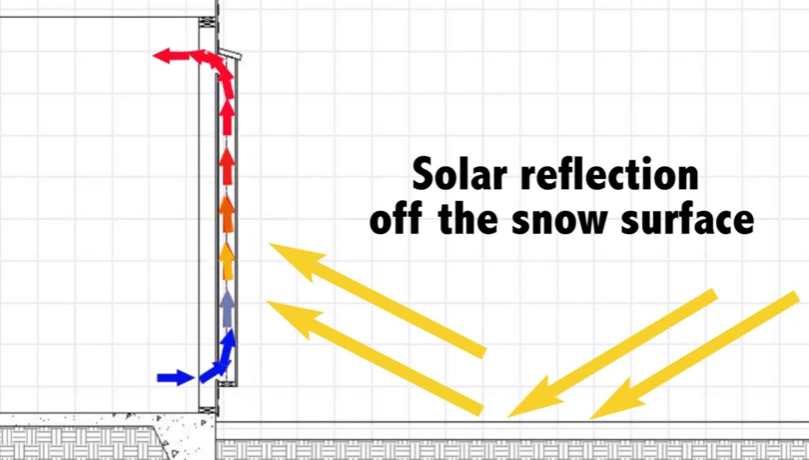
- Install a DIY solar water heater kit on your home.
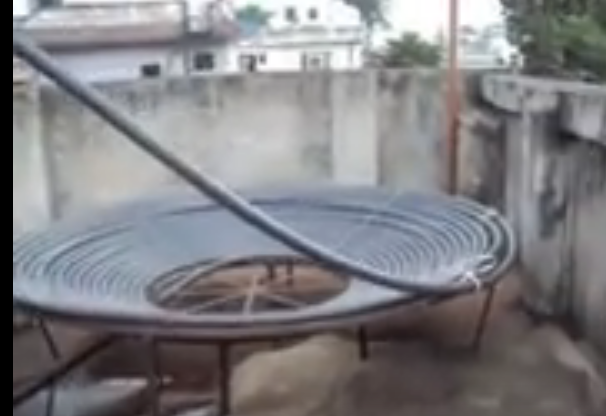
- Add a solar hot water heater to your roof.
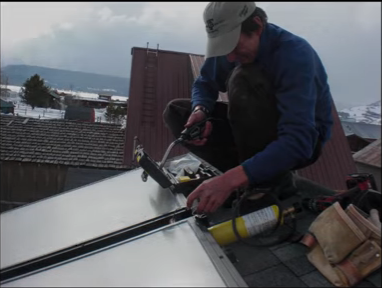
- Build a homemade solar hot water heater with a mini-pump.
- Build your own batch solar hot water heater for your home.
How to build a diy passive solar water heater?
The simplest heaters are probably those that utilize discarded drums or barrels painted with flat black paint. I have seen many of these when I was visiting Greece; homemade solar water heaters using drums and installed on the flat roof using gravity for hot water transfer.This idea can be improved by making it more efficient, setting them in the insulated box with a glass or fiberglass cover and with the small additions.
Step 1
The first step when you build a sun-powered heater is to design and make a wooden frame for the solar tank-solar collector. A 2×4 inch wood will do the job. The future box should be designed so you can apply a standard size of the insulation, cover and other elements. You have to pay attention and build a good support for the storage tank. One side has to be inclined, so glazing can have better sun exposure.
Step 2
Build the walls or sides of the heater box, using a plywood, or if you have any other material handy. Inside of the box should be covered with the materials like fiberglass insulation, Styrofoam or aluminum.
Step 3
Before you build a heater box, plan ahead and design where the plumbing will be installed; the opening for incoming water and exiting pipes. Keep in mind how will you connect it to the heating system and house plumbing.
Plumbing fittings and pipes should be installed at the bottom of the tank for water coming from the house, and another set on the top of the sun-powered water heater in the backup unit, for example.
During and after building a heater, always check for leaks. When filling the heating system with water make sure to remove all the air from the tank. Bleed valve and temperature relief valve should be installed in your heater as well. The drain pipes have to run consistently downhill for easy drainage.
Step 4
Insulate the pipes, to reduce energy and heat loss, so your built solar heater can be more energy efficient.
Step 5
The final step in your DIY, build a solar water heater box, is to cover the box. There are many effective materials available for glazing, like acrylic, polycarbonate, fiberglass, glass, tempered glass. The idea is to increase the sun’s heat through the cover and reduce the heat loss at the same time.
Because of its great characteristics we recommend using a tempered glass as a cover. Talk to the local store to see what sizes they can provide, and based on that design your solar heater box. If you order a custom made, it can cost you more.
Step 6
In this step, you should work on details that will determine the efficiency of the system.
If you are using an old electric heater, strip off the outer enclosure and insulation, get rid of the old pipe fittings and check the inside for sediments. Clean the tank if necessary. Paint the tank in flat black to increase the heat absorption and install the pipe fittings, drain and pressure release valve.
Seal all the exposed surfaces, run silicon along joints and connections, install reflectors to concentrate sun lights, include insulation or shutter at the top as a heat loss protection and your homemade solar hot water heater is ready.
Buy our passive solar water heaters to save time and money.
How to Build a Passive Solar Water Heater plans
passive solar water heating
Low cost diy passive solar water heater
How does a passive solar water heater work?
- Solar water heating (SWH) is the conversion of sunlight into heat for water heating using a solar thermal collector.
- A variety of configurations are available at varying cost to provide solutions in different climates and latitudes. SWHs are widely used for residential and some industrial applications.
- A sun-facing collector heats a working fluid that passes into a storage system for later use. SWH are active (pumped) and passive (convection-driven).
How hot do solar water heaters get?
- Water heated by the sun can reach temperatures exceeding 212° F, but the normal temperature for household use is only 120° to 130° F.
- Solar energy can easily achieve these temperatures, even on cloudy days
How much does it cost to install solar water heater?
The Cost of a Solar Water Heater. A solar water heater is around $7,000 to $12,000 including installation,quality, and complexity of the system. Figure it’ll take two to four days to install.
Question:
Related Searches: Flat plate solar water heater | Electric storage water heater | Air source water heater
Want to know more?(Solar Water Heater)
Email: [email protected]
WhatsApp:+86 157 2077 3477
Skype :+86 157 2077 3477
